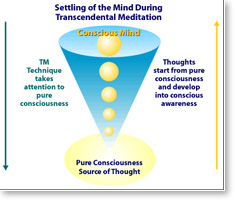 The range of human sensory perception never ceases to amaze me. Our ability to savor the complexities and details of tastes, smells, textures, as well as the visible and audible world is nothing short of astonishing, given our biologic machinery. Our sense of hearing is particularly acute, being able to discern frequencies, or what we call ‘pitch’, from as low as 20 cycles per second to greater than 20,000 cycles per second. We can appreciate differences in loudness over such a large range, that scientists have to use a logarithmic scale (the decibel scale) to describe our ability. In fact, we can detect a sound so soft, that it is equal to only 2×10-10 atmospheric pressure.
The range of human sensory perception never ceases to amaze me. Our ability to savor the complexities and details of tastes, smells, textures, as well as the visible and audible world is nothing short of astonishing, given our biologic machinery. Our sense of hearing is particularly acute, being able to discern frequencies, or what we call ‘pitch’, from as low as 20 cycles per second to greater than 20,000 cycles per second. We can appreciate differences in loudness over such a large range, that scientists have to use a logarithmic scale (the decibel scale) to describe our ability. In fact, we can detect a sound so soft, that it is equal to only 2×10-10 atmospheric pressure.
Our visual ability is no less amazing. Though the range of light we can perceive (wavelengths from 360nm to 720nm) is small compared to our hearing range, we can detect infinitesimally small amounts of light in the middle of that range. In fact, the retina shows electrical responses when hit by even one or two photons of light. We are, in effect, perceiving events on a quantum level!
Each sensory perception triggers a complex circuitry within the cerebral cortex, processing the sensory stimulus and providing for its interpretation. In the case of tastes and smells, the limbic areas of the brain may become particularly activated, providing an emotional counterpart to our sensory experience. Our processing of sounds is also rather complex, with certain pitches activating parts of the cortex, causing us to perceive a lower harmonic of the original sound in addition to the sound transmitted by our ears.
The process of transcending during practice of the Transcendental Meditation technique is characterized by experiencing a thought on progressively subtler levels of the mind, until thought itself is transcended, and we arrive at the infinitely settled, blissful source of thought. Thought itself can be considered a subtler form of sensory perception. So, we can say that we transcend through one of the senses. It should be possible to transcend using any of the five senses. In fact, Walter Koch, one of the first people Maharishi Mahesh Yogi trained as a TM teacher, and who taught thousands of people to practice the TM technique, used to give a visual analogy of transcending. He asked us to imagine we were viewing a locomotive moving away from us towards the horizon. There comes a moment when we are aware of the most subtle form of the train at the horizon, and then it slips away, and we are aware of the expanse of the horizon itself.
Though it may be possible to transcend using any of the senses, practically speaking, it is through sound on the level of thought, that transcending is easiest. Our nervous system has evolved to appreciate the varieties of pitch, loudness and pattern, all of which affect neural activity. The most fundamental aspects of nature, the first relative manifestations of the unified field, are expressed as waves, which we can describe as sounds. So it makes sense that sound, experienced on subtler and subtler levels of the mind naturally leads us to that unified field of pure awareness from which all thoughts arise. And, in the process of arriving there, that quality of sound, really a faint idea, causes an integrated response in the electrical activity throughout the nervous system. You could say that through sound we are creating neurophysiological harmony. Our whole physiology resonates in that harmony as we return from meditation back into activity.… and you don’t even have to be able to carry a tune…





